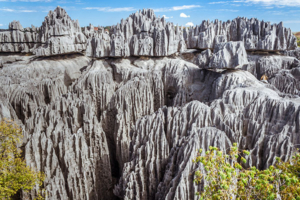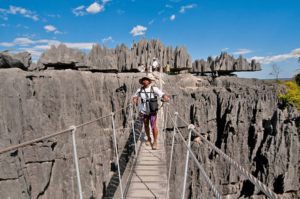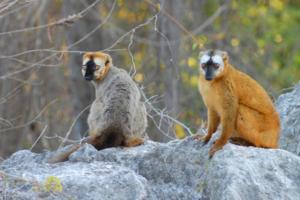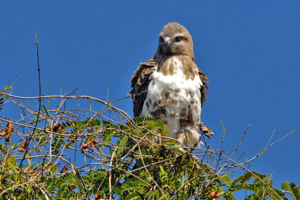Tsingy de Bemaraha National Park
The spectacular mineral forest of Tsingy de Bemaraha stands on the western coast of Madagascar. Tsingy is the Malagasy word for “walking on tiptoes” and the nearly impenetrable labyrinth of limestone needles justifies this name. The whole protected area, designated a World Heritage Site by the UNESCO in 1990, comprises a surface of 1.575 sqkm. This remote area was not a tourist region until 1998, when the southern area (723 sqkm) was declared a National Park. The northern section is an Integral Reserve so tourists are not allowed to enter the zone. The reserve’s canyons, gorges, undisturbed forests, lakes and mangrove swamps display an astonishing richness of fauna and flora that have not been completely recorded. The rate of endemism is about 85%, and 47% are even local endemic.
The flora has a high local endemism rate. The western part is principally covered by deciduous dry forests, which are particularly well adapted to the extreme changing climate conditions of the area. The eastern section is formed by grassy savannas and lowland bushes. Inside the canyons we find small areas of dense tropical forests and lianas, since it is very humid among the tall tsingy formations.
Visitors can spot various lemur species, including Decken’s sifaka, red-fronted brown lemur, fat-tailed dwarf lemur, grey mouse lemur, Cleese’s woolly lemur, and the Sambirano lesser bamboo lemur, which only occur here and are mostly nocturnal.
More than 100 bird species have been catalogued at present inside the National Park, including the critically endangered Madagascar fish eagle, crested ibis, Madagascar wood-rail, giant coua, and Coquerel´s coua.
The 45 reptiles and amphibians which are found here are all endemic. Some significant species that only occur in Bemaraha are the Madagascar iguana, a local endemic long-tailed skink, and the Antsingy leaf chameleon.






